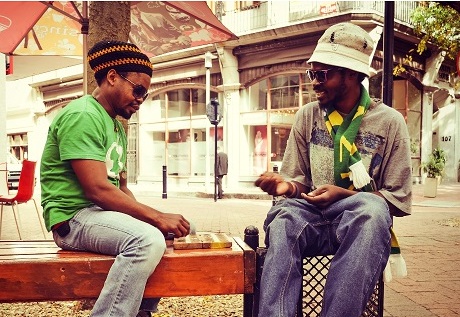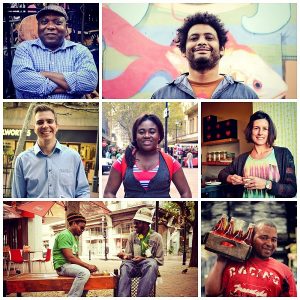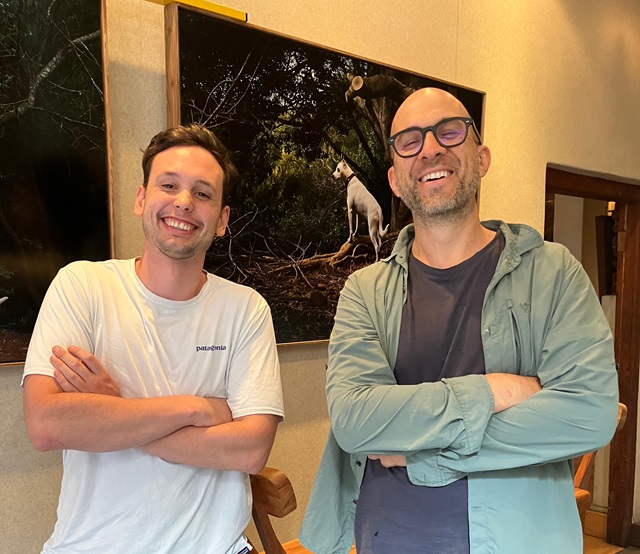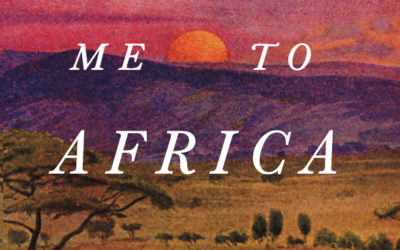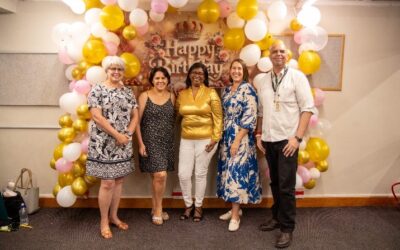I firmly believe that the more a city does to enhance its uniqueness, whether that is cultural, natural or architectural, the more people will want to live, visit, work and do business there, writes Bulelwa Makalima-Ngewa.
I love cities. They are buzzing, organic and vibrant with motion on the streets, pulsing with citizens going about their business to live, work and play.
Around the world, urban planners like myself are fascinated with finding the secret codes to understand and predict patterns in cities. How they function, the way they are designed, how they embrace or exclude people, and the variety of lifestyles they attract or encourage.
Countless surveys have looked into what makes a city appealing to residents, visitors and businesses. Cities are often ranked based on sustainability, innovation and productivity, but more and more, having travelled to many cities around the world, I firmly believe that the more a city does to enhance its uniqueness, whether that is cultural, natural or architectural, the more people will want to live, visit, work and do business there.
When the Cape Town Partnership started in 1999, we thought of cities as economic engines, driven by investment. A lot of time was spent working with both the public and private sector to ensure that business stayed in the central business district. Over time, we came to see the city as an interconnected system – of transport, infrastructure, business, services – of which people were the users. Our goal was to make the space more user-friendly.
Today, as I have written in this column before, we’ve come to see cities as places of “concentrated humanity”, places created and sustained by people. I’ve come to realise that a critical – but often underrated – asset of a city is community distinctiveness or the way that people relate to a city. Distinctiveness involves public life, architecture, and historic and cultural preservation, but also events, restaurants and street food, creative expression and the way we use parks and open public spaces.
This has not always been true, and I have witnessed a transformation of our central city during my work at the Cape Town Partnership over the past 10 years. The Cape Town CBD has evolved, transforming at the pace of nature, moving in response to both our constituent population and the broader social environment.
Take Bree Street as an example, which was like a hollow highway, a street without much soul, when the Cape Town Partnership moved into our offices here in 1999. In the past few years however, I have seen Bree Street come to life – from the R1.6billion Portside office tower to the string of new nightspots and lunch cafes.
Just last weekend I found myself standing in a massive crowd waiting for the new KLûK CGDT flagship store in Bree Street to throw open its doors. Inside it was very exciting to see the diversity of fashion that people were wearing, as well as in Malcolm Klûk and Christiaan Gabriël du Toit’s latest collection. Although one of the highlights of the Mercedes-Benz Fashion Week Cape Town, what stood out for me was the palpable excitement about this sophisticatedly renovated building being right in the CBD, rather than being featured in a flagship mall.
As downtown specialist Kent Robertson says, what draws people to the CBD “is a strong sense of place, a characteristic rarely associated with regional malls, big-box retailers or suburban commercial corridors”. Agreeing wholeheartedly, I believe that a unique sense of place is critical for economic sustainability. It is this sense of place that I’ve seen developing in the central city – a distinct collection of qualities and characteristics that include visual, cultural, social and environmental aspects that make people want to frequently spend quality time here.
I went to the KLûK CGDT opening function with my sister, who is from Johannesburg, giving me the opportunity to see our central city through an outsider’s eyes. Even in the driving rain and cold it was a special night out, made possible by the fact that I am fortunate to have my own transport and a sister who was willing to treat me to a drink at Clarke’s, dinner at the Westin Grande and a fashion show at the Cape Town International Convention Centre. Incidentally, the fashion was surprisingly accessible with free entrance given to the concession queue once ticketholders had taken their seats.
My sister agreed that she could have had a similar evening in Johannesburg, but in Cape Town there is an additional X-factor. The strong sense of place in Cape Town is often an intangible quality but comes to fruition in the way we sense the heartbeat of our CBD – the capacity that we have to connect to each other, and the ability to see and watch people in the heart of our CBD, whether in inspirational retail spaces and restaurants, or right on the street.
This X-factor or sense of place can be said not only for Bree Street, but for the larger Cape Town CBD. I believe that the appeal of a city can instantly be tapped by the vitality of its central city. It is the litmus test not only for all our economic development efforts, but also for how we, the citizens, interact with each other and our urban environment. Sense of place is what makes one city different from another, but sense of place is also what makes our physical surroundings worth caring about.
Cape Town, surrounded by sea and mountain, has always drawn visitors and locals with its dramatic natural landscape. Increasingly however, people here and around the world are also recognising Cape Town for its cosmopolitan and creative urban identity. Given the rise in urban and cultural tourism, which now accounts for 70% of global tourism, the increasing importance of a city’s ability to attract and retain talent, visitors and citizens alike, and the role of cities in our national consciousness, it is of paramount importance that Cape Town remains distinctive.
A confirmation of the distinctiveness of Cape Town has been the steady growth in tourism to the city over the past five years. Cape Town’s ability to consistently make world rankings of places to visit (earlier this year, it was listed as number one on the New York Times’ 52 Places to go in 2014 list) speaks of a hospitality and tourism industry that plays a significant role in the economic, cultural and social distinctiveness of the city. Not only does the tourism industry contribute an estimated R14 billion to our city’s annual economy, it also creates around 298 000 jobs and is, after agriculture, our region’s second biggest employment industry.
I was honoured to be a guest speaker last weekend at the Cape Legends Inter-hotel Challenge Gala awards evening, which highlighted to me two initiatives that are achieving great successes in making the benefits of the Cape Town tourist economy more accessible.
The challenge aims to uplift, train, mentor and nurture disadvantaged young talent in the hospitality industry by incentivising them through a series of competitions and workshops. Hotels from across the country compete in regional events to finally, during the first two weeks of July, present their creative competition menus to members of the public and press. In turn, the proceeds from these events go to StreetSmart SA.
Endorsed by Emeritus Archbishop Desmond Tutu, many of us are familiar with the StreetSmart concept of adding R5 to your restaurant bill, but what I didn’t realise is that every cent of that R5 goes to a beneficiary selected by the restaurant. The NPO’s operational costs are covered by initiatives such as the Inter-hotel Challenge events. The StreetSmart beneficiaries are all working to normalise the lives of street children and those at risk.
I cannot agree more with Cape Legends Inter-hotel Challenge organiser Annette Kesler: “the hotel industry in SA has quietly grown into a magnificent force offering unlimited scope for true grit, talent and creativity and has become a shining example for advancement, fulfilling hope and aspirations.”
Accessibility is important and what exhilarates me so much about the vibrancy of the CBD is that the streets belong to all of us. There is no entrance fee or doorman that is deciding who can and can’t go in. Public space is for everyone and, as we have seen through our work on Church Square, allows for the most serendipitous interactions. I’ve come to appreciate in a much deeper way that there isn’t one ‘correct’ or ‘official’ version of relating to our city. Cape Town is as diverse as the people who live in it.
After all, how do we continue to grow, be inspired, be tolerant and keep our souls alive without connecting with other people, both locals and visitors?
I believe that Capetonians need to embrace who we are, by believing that we have something unique to share with the rest of the world and, more importantly, that we can compete on our own terms as a vibrant, entrepreneurial and creatively distinctive African city.
This article first appeared in the Cape Times on 6 August 2014.
Bulelwa Makalima-Ngewana is CEO of the Cape Town Partnership. Talk to her @darksjokolade

